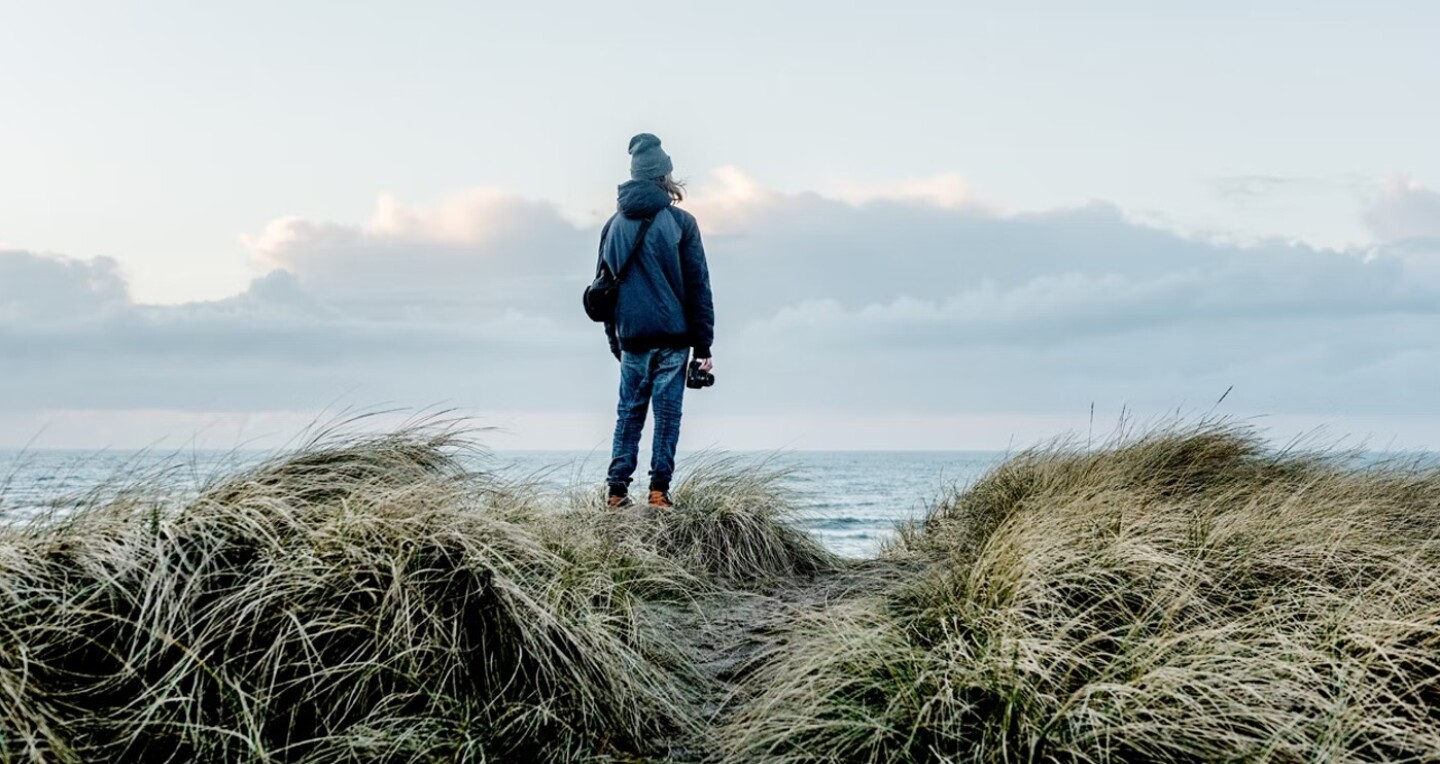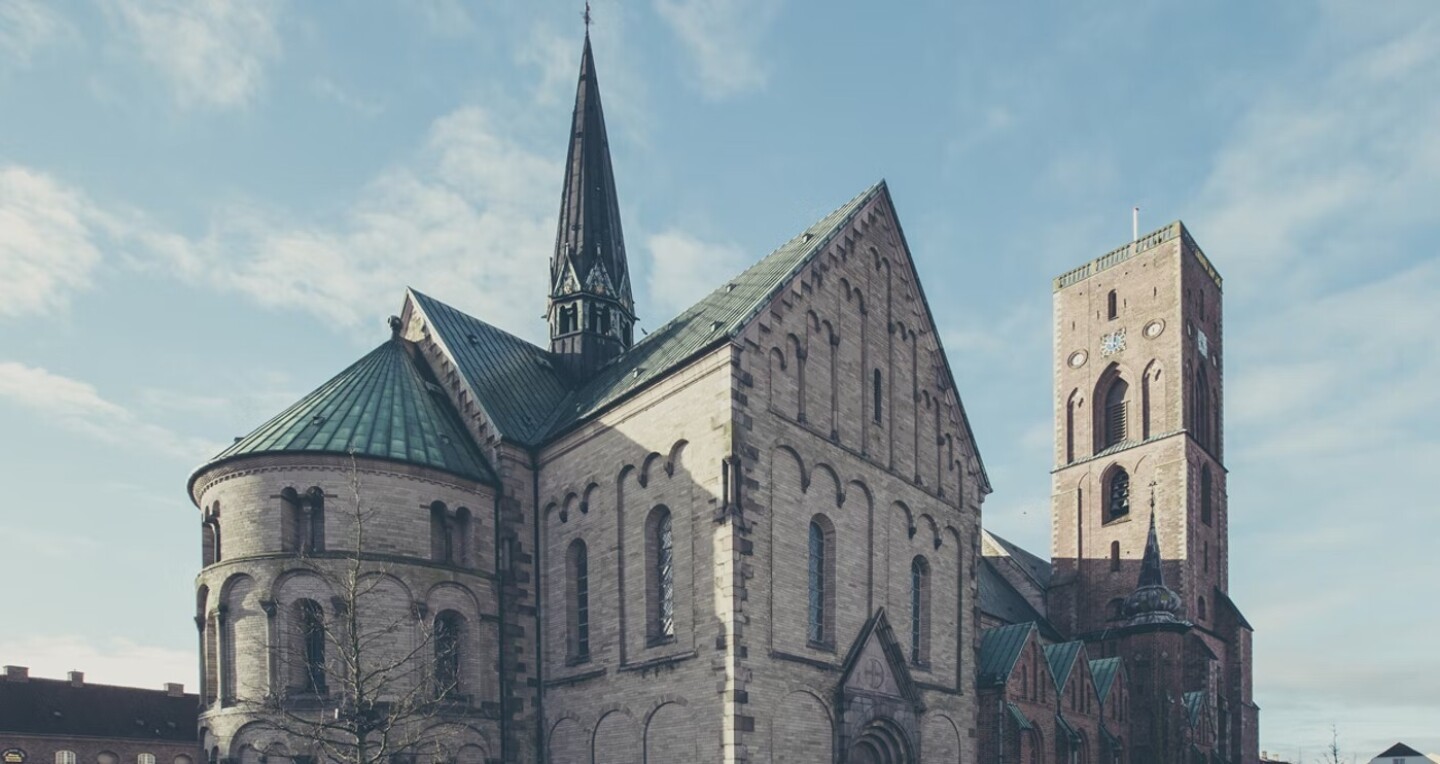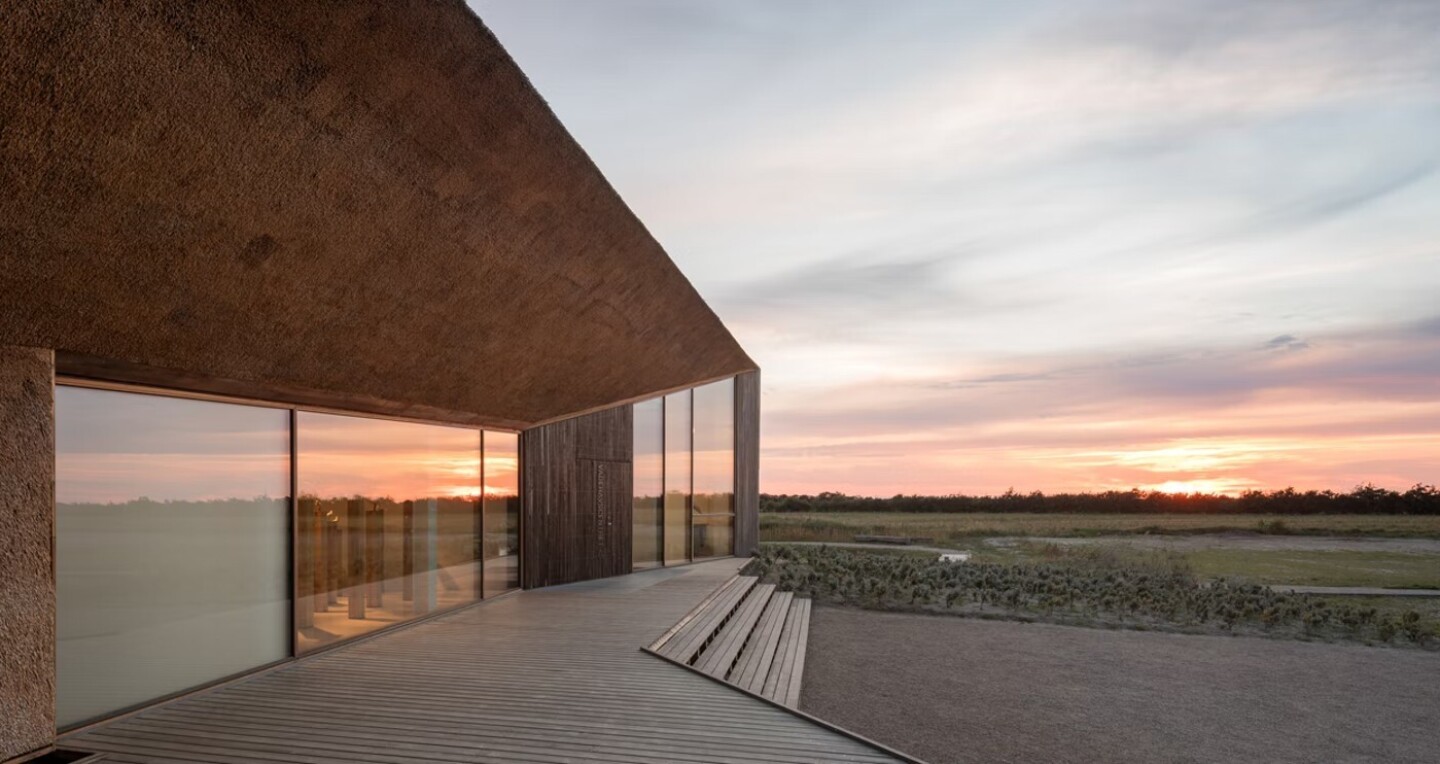From Michelin-starred restaurants and world-renowned museums to historic sites and natural phenomena, West Denmark boasts surprise and delight around every corner. That’s why this sometimes overlooked—but no less fairytale-like—corner of the country is a crowd-pleasing location with something for everyone. This six-day trip packs in one-of-a-kind excursions and activities that will thrill even the most seasoned travelers. (Or you can see it all in as few as four days and take it a little slower to extend up to seven days.)
Visit a thriving artist colony in Denmark’s northernmost town. Surf the North Sea’s mighty waves at the aptly named Cold Hawaii. Come face-to-face with the Grauballe man, the world’s best-preserved bog man from the Iron Age. Read on for more unforgettable experiences.
Itinerary / 6 DAYS
PLAN YOUR TRIP
EXPLORING AARHUS
PHOTO BY ROBIN SKJOLDBORG
DAY 1Arrive in Aalborg and explore the city
Upon arriving in Aalborg, Denmark’s fourth largest city, take a walk in Jomfru Ane Park. Known for its revitalized waterfront along the Limfjord, the park features a cafe, recreation area, and pool. Sitting on Aalborg’s harbor you’ll also discover the Utzon Center. A must-see for architecture fans, it’s the final masterpiece by Danish architect Jørn Utzon, who designed the Sydney Opera House. If you have time, go by Hjelmerstald, one of very few preserved neighborhoods in Aalborg. Its charming cobblestone streets lined with colorful crooked houses are a postcard-worthy example of “hygge.”
Located below one of the busiest streets in Aalborg, lies one of the city’s lesser-known treasures: a Franciscan Monastery that dates to 1250. Walk among the well-preserved medieval ruins and view artifacts from the city’s rich history. For adose of contemporary culture, head to Kunsten, “a living art museum” in an Alvar Aalto-designed building that hosts immersive exhibitions like The Magic of Form, a show dedicated to Danish designers that runs through February 27, 2022.

RUBJERG KNUDE LIGHTHOUSE
PHOTO BY DANIEL VILLADSEN
DAY 2Tour Skagen and Råbjerg Mile
Continue your road trip by heading one hour along the west coast to Råbjerg Mile, where you will find the largest migrating sand dune in the country in addition to Rubjerg Knude Lighthouse, which has served as a guiding beacon for sailors for almost 70 years. Due to ongoing erosion on the coastline, the lighthouse and several other nearby historic buildings were moved further inland in 2019 to prevent them from falling into the North Sea.
One building that did not survive is the St. Laurence Church (now known as The Sand-Covered Church). Built in the second half of the 14th century, sand migration began to reach the church at the end of the 18th century. The congregation had to dig their way into the church when they wanted to attend services. The struggle continued until 1795 when the church was closed by royal decree. Today only the tower stands as a reminder of mother nature’s force.
Later in the day, drive further south (about 2.5 hours) to Thy National Park. Tonight, you have the opportunity to sleep right in the rugged coastal wilderness of the park itself, which contains some of Denmark’s wildest land and traditional seaside villages. Pitch your tent in Hvidbjerg Dune Plantation or another beautiful site and enjoy a night of stargazing.
If “glamping” isn’t your thing, check into Svinkløv Badehotel, set right on the dunes. Having recently undergone a stunning renovation, the historic hotel features warm, inviting rooms that open up onto the sand, the forest, and the North Sea. After a long day, dig into a meal at the hotel restaurant featuring the ingredients that have just been pulled up from the ground or fished from the sea.

KLITMØLLER
PHOTO BY METTE JOHNSEN
DAY 3Spend the Day in Thy National Park and Klitmøller
Fishing is at the heart of Thy National Park’s historic communities like Stenbjerg. Stop by for lunch at Stenbjerg Kro, an old Danish inn overlooking the sea, to dig into the catch of the day and some warming homemade spiced schnapps, or head out to sea with a local fisherman to see what you can hook with a little patience and expert guidance.
The park has an abundance of culinary delights on land, too. Hunt for wild mushrooms, including boletuses and popular chanterelles, growing around the dune plantations, and collect cranberries in the wetland areas. As you venture further into the heathery hills, look for blackberries and bog whortleberries, which are often used to make jam and schnapps.
Later, visit Cold Hawaii at Klitmøller, Denmark’s center for extreme watersports. The North Sea’s mighty waves create the ideal conditions for kitesurfing and surfing of all levels, or, should you want to take it a little bit easier, paddle boarding and canoeing can be done in some of the calmer waters.
After enjoying your outdoor adventures, drive into Aarhus (about 2.5 hours).

RIBE CATHEDRAL
PHOTO BY ©LASSE LAGONI
DAY 4Head to Aarhus and explore the Moesgaard Museum
Afterward, visit the renowned Moesgaard Museum. Uniquely located in the hilly landscape overlooking the sea, the museum details the culture, nature, and archaeology of Denmark’s ancient past. Stroll along a prehistoric trail to see burial mounds and restored prehistoric homes and marvel at the Grauballe man, the world’s best-preserved bog man from the Iron Age.
Delve even deeper into the past at the Viking Museum. Around 1200 years ago the Vikings founded Aarhus on this very spot. In addition to the artifacts discovered here in the 1960s, you can see how Aarhus developed over the centuries. Continue to ARoS, one of the largest art museums in Northern Europe, which features Danish art from the past 300 years and highlights the Danish Golden Age and early Modernism. Be sure not to miss the rooftop exhibit created by Olafur Eliasson. The circular glass walkway provides stunning views of the city through a rainbow panorama.
In the evening, indulge your appetite at Aarhus Street Food, a lively market with more than 30 kitchens and bars serving up everything from Vietnamese banh mi to Danish smørrebrød (open-faced sandwiches). If you’re looking for something a bit more upscale, Aarhus boasts several Michelin-awarded restaurants, including Restaurant Domestic, known for its gourmet use of locally produced ingredients.

DAY 5Go to Ribe and the Tirpitz Bunker Museum
Ribe is also known as the hometown of Jacob A. Riis, author of How the Other Half Lives, a pioneering work of photojournalism that documented the squalid living conditions in New York City slums in the 1880s. At the Jacob A. Riis Museum, follow his story of emigration and learn how he became a hard-hitting journalist who President Theodore Roosevelt called the “ideal American.”
Later in the day, head out to the nearby Tirpitz Bunker Museum. Housed in a German WWII bunker, this spectacular “hidden” museum under the sand is designed by world renowned architect Bjarke Ingels Group. It boasts four large exhibition galleries that offer insight into the culture and history of Denmark’s West Coast. Tour parts of the former bunker halls, see the country’s largest collection of amber, discover what the West Jutland landscape looked like during the Ice Age, and hear local stories from WWII.
That evening, make your way to Henne Kirkeby Kro, a historic inn and one of the country’s best restaurants with two Michelin stars. Located close to Filsø Lake and Blaabjerg Plantation, which has the largest sand hill forest in Denmark, the inn cooks up subtly modern dishes using its own livestock and produce from its garden.

THE WADDEN SEA CENTRE
PHOTO BY ©VADEHAVSCENTRET/ADAM_MØRK
DAY 6 Discover Wadden Sea National Park and the Island of Mandø
Afterward, head to Mandø, a small island in the Wadden Sea that’s only accessible during low tide via a road that is placed on the very bottom of the sea. This ranks as the best place for oyster picking in Denmark. Strap into some waders and learn how to pluck oysters from the seabed and enjoy the fruits of your labor. If you go during the spring or fall, you might be lucky enough to witness the Black Sun—a phenomenon during which thousands of starlings fly in sync and create circular formations, turning the sky black.
A bit further south on the mainland, you can climb the Marsk Tower. Rising 100 feet out of the marshland, the winding staircase provides a dramatic sight and an expansive view across Wadden Sea National Park and the surrounding wildlife. Get a good night’s rest—tomorrow, you’ll head to Billund to catch your flight home at Billund Airport.
For this itinerary and other wonderous West Denmark trips, let the trusted travel advisors at Exeter International plan your journey. Book now.






